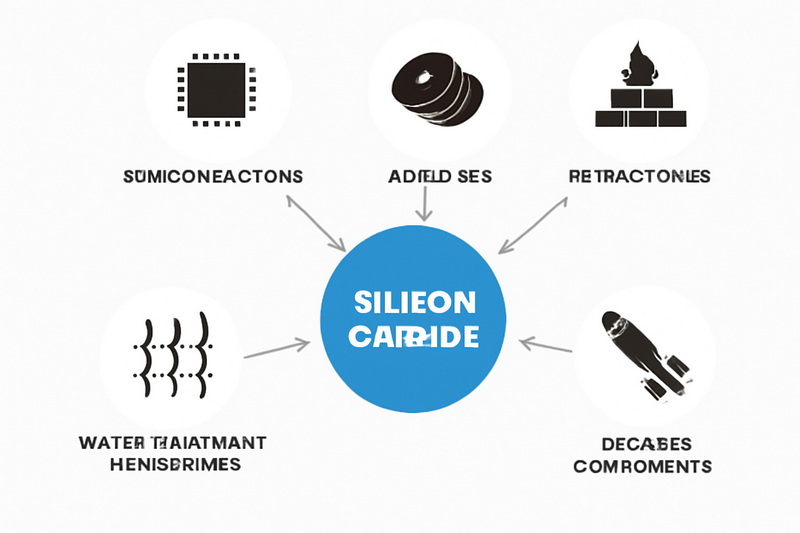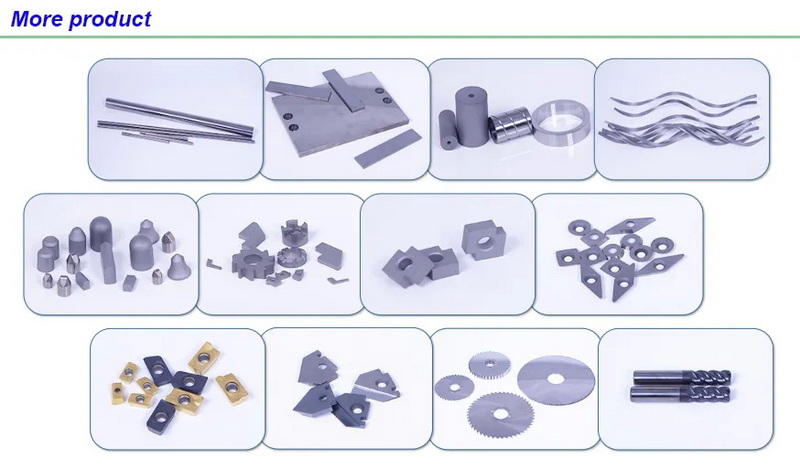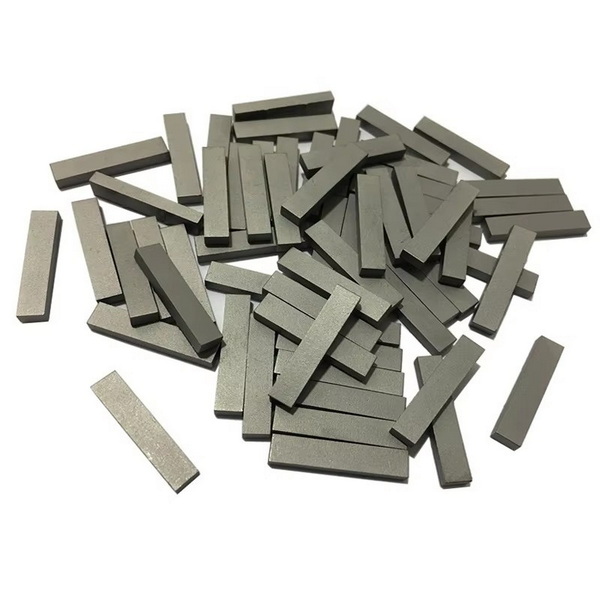Content Menu
● Introduction to Silicon Carbide
● The Importance of Silicon Carbide Production in the USA
● Raw Materials and Preparation
● The Acheson Process: Traditional SiC Manufacturing
>> Overview
>> Step-by-Step Process
● Modern Manufacturing Techniques
>> Chemical Vapor Deposition (CVD)
>> Large Furnace and Automated Production
● Post-Processing and Shaping
● Quality Control and Standards
● Leading US Silicon Carbide Producers and Facilities
● Applications of Silicon Carbide in Industry
● Environmental and Economic Impacts
>> Energy Use and Emissions
>> Economic Benefits
● Technological Innovations Driving Silicon Carbide Production
● Expanding Applications of Silicon Carbide
● Environmental Sustainability Efforts
● Strengthening the Supply Chain
● The Future of Silicon Carbide Production in the USA
● Conclusion
● FAQ: Silicon Carbide Production in the USA
>> 1. What is the primary method for producing silicon carbide in the USA?
>> 2. Why is domestic silicon carbide production important for the USA?
>> 3. What are the main applications of silicon carbide produced in the USA?
>> 4. How are quality and purity controlled in US silicon carbide manufacturing?
>> 5. What innovations are shaping the future of silicon carbide production in the USA?
Silicon carbide, commonly known as SiC, is a foundational material for modern industry and technology. Its exceptional hardness, thermal conductivity, and chemical stability make it indispensable across sectors such as semiconductors, electric vehicles, defense, metallurgy, and construction. In the United States, silicon carbide production has become a high-tech, strategically vital industry, blending traditional manufacturing with advanced innovations.
This article provides a comprehensive exploration of silicon carbide production in the USA, including its history, core manufacturing processes, technological advancements, leading producers, strategic significance, and future outlook. You'll find detailed explanations, visual process breakdowns, and insights into how this essential material shapes American industry.

Introduction to Silicon Carbide
Silicon carbide is a compound of silicon and carbon with the chemical formula SiC. Discovered in the late 19th century, it quickly became renowned for its extraordinary hardness—second only to diamond—and its ability to withstand high temperatures and corrosive environments. These properties have made it a key material for abrasives, cutting tools, and, more recently, for high-performance semiconductor devices.
The Importance of Silicon Carbide Production in the USA
The United States has identified silicon carbide as a material of strategic importance, especially as global supply chains for advanced materials grow more complex and competitive. Domestic production of silicon carbide supports several vital industries:
- Semiconductors and Electronics: SiC is increasingly used in power electronics, electric vehicles, and renewable energy systems due to its ability to handle high voltages and temperatures.
- Defense and Aerospace: Its durability and performance under extreme conditions make it ideal for military and aerospace applications.
- Industrial and Energy Sectors: SiC's use in abrasives, refractories, and high-temperature applications is essential for manufacturing, metallurgy, and energy production.
Recent federal investments, such as those under the CHIPS and Science Act, aim to expand US silicon carbide manufacturing capacity, reduce reliance on foreign suppliers, and secure the nation's technological future.
Raw Materials and Preparation
The primary raw materials for silicon carbide production are:
- Silica (SiO₂): Usually sourced as high-purity quartz sand.
- Carbon: Commonly supplied in the form of petroleum coke or coal.
Additional materials, such as sawdust and salt, may be added to improve porosity and facilitate gas escape during the reaction process.
The Acheson Process: Traditional SiC Manufacturing
Overview
The Acheson process, developed in the late 1800s, remains the most widely used method for bulk silicon carbide production. It is a high-temperature, batch process that forms the backbone of US SiC manufacturing.
Step-by-Step Process
1. Mixing: Silica and carbon are thoroughly mixed, often with additives like sawdust.
2. Furnace Loading: The mixture is packed around graphite rods in a large electric resistance furnace.
3. Heating: An electric current passes through the graphite rods, heating the core to temperatures around 2,500°C.
4. Chemical Reaction: The main reaction is:
SiO2+3C→SiC+2CO
5. Formation of SiC: Silicon carbide forms as a layer around the graphite core, while byproducts like carbon monoxide gas escape.
6. Cooling and Extraction: After 30–40 hours of firing, the furnace cools. The outer layers are removed to expose the SiC crystals.
7. Crushing and Milling: The crude SiC is crushed, milled, and classified into grains and powders of various sizes for different applications.
Modern Manufacturing Techniques
While the Acheson process dominates bulk production, advanced applications—especially in semiconductors—require higher purity and more controlled crystal growth. Two key methods are:
Chemical Vapor Deposition (CVD)
- Process: Silicon-containing gases (like silane) and hydrocarbon gases react at high temperatures in a reactor, depositing a thin, high-purity SiC layer onto a substrate.
- Applications: Used for producing single-crystal SiC wafers for electronics and high-tech devices.
Large Furnace and Automated Production
- Scale: US manufacturers now operate large, automated facilities using improved furnace designs, process control, and automation to boost yield, efficiency, and product consistency.
- Wafer Fabrication: Facilities like Wolfspeed's Mohawk Valley Fab in New York produce 200mm SiC wafers, the largest in the world, supporting the shift from silicon to SiC in power electronics.
Post-Processing and Shaping
After initial synthesis, silicon carbide undergoes several post-processing steps:
- Purification: Removal of impurities to achieve the desired grade.
- Milling and Classification: Crushing and sorting into powders and grains for abrasives, ceramics, or further processing.
- Shaping: Methods include pressing, extrusion, and casting to form items like kiln furniture, membranes, or semiconductor substrates.
- Sintering: Some applications require sintering—heating the shaped SiC under pressure to achieve high density and strength.
Quality Control and Standards
US SiC producers adhere to strict quality standards to meet the demands of various industries:
- Grain and Powder Standards: Products are classified according to ANSI (North America), FEPA (Europe), and JIS (Japan) standards for size and purity.
- Semiconductor Grade: For electronics, SiC wafers must be virtually defect-free, requiring advanced inspection and process control to minimize dislocations and impurities.
- Compliance: Many facilities operate under ISO 9001 and other quality management systems to ensure consistency and traceability.
Leading US Silicon Carbide Producers and Facilities
The USA is home to several major silicon carbide manufacturers and state-of-the-art facilities:
- Wolfspeed: Operates the world's largest 200mm SiC wafer fab in Marcy, New York, and is expanding with new facilities in North Carolina.
- onsemi: Recently expanded its SiC production facility in New Hampshire, increasing capacity fivefold to meet growing demand.
- Cembrane: Runs a state-of-the-art SiC membrane factory in Texas, serving both US and global markets for water treatment and filtration.
- Washington Mills: A historic US producer, manufacturing SiC grains and powders for abrasives and industrial applications using both traditional and modern methods.
- Other Suppliers: Numerous companies supply SiC in various forms for electronics, aerospace, medical, and industrial uses.
Applications of Silicon Carbide in Industry
Silicon carbide's versatility supports a wide range of applications:
- Semiconductors: SiC wafers are used in power devices, MOSFETs, and diodes for electric vehicles, renewable energy, and high-voltage applications.
- Abrasives and Cutting Tools: Due to its hardness, SiC is essential for grinding, cutting, and polishing.
- Refractories and Kiln Furniture: Its thermal shock resistance makes it ideal for furnace components and high-temperature ceramics.
- Water Treatment: SiC membranes are used for filtration in drinking and wastewater treatment.
- Defense and Aerospace: SiC's durability and lightweight properties are valuable for armor, sensors, and structural components.

Environmental and Economic Impacts
Energy Use and Emissions
- High Energy Demand: The Acheson process is energy-intensive, requiring significant electricity, often sourced from renewable or low-cost hydroelectric power.
- Emissions: The production process releases carbon monoxide and other gases, necessitating robust environmental controls.
Economic Benefits
- Job Creation: New facilities create thousands of high-tech manufacturing and construction jobs, particularly in regions like New York and North Carolina.
- Supply Chain Security: Domestic production reduces reliance on imports, strengthens supply chain resilience, and supports national security.
- Innovation: US investments in R&D drive new manufacturing techniques, higher efficiency, and global competitiveness.
Technological Innovations Driving Silicon Carbide Production
Recent years have seen remarkable technological advancements in silicon carbide production in the USA. Innovations in crystal growth techniques, such as the use of physical vapor transport (PVT) and improved chemical vapor deposition (CVD) methods, have significantly enhanced the quality and size of SiC wafers. These advancements enable the production of larger diameter wafers with fewer defects, which is critical for high-performance semiconductor devices.
Automation and digitalization have also transformed manufacturing processes. Smart sensors and AI-driven process controls optimize furnace conditions in real-time, reducing energy consumption and improving yield. These technologies contribute to more sustainable and cost-effective production.
Expanding Applications of Silicon Carbide
Beyond traditional uses, silicon carbide is finding new applications in emerging technologies. For example, SiC-based power electronics are essential components in electric vehicle (EV) charging infrastructure, enabling faster and more efficient charging. Additionally, SiC is being explored for use in quantum computing and advanced sensor technologies due to its unique electrical properties.
Environmental Sustainability Efforts
The silicon carbide industry in the USA is increasingly focused on reducing its environmental footprint. Manufacturers are investing in renewable energy sources to power energy-intensive processes and implementing advanced emission control systems to minimize greenhouse gas emissions. Recycling and waste reduction initiatives are also gaining traction, aiming to recover valuable materials from production scrap and reduce landfill waste.
Strengthening the Supply Chain
To ensure a resilient supply chain, US companies are collaborating with domestic and international partners to secure raw material sources and develop local supply networks. This approach mitigates risks associated with geopolitical tensions and global market fluctuations, ensuring steady growth and stability in silicon carbide production.
The Future of Silicon Carbide Production in the USA
The outlook for silicon carbide production in the USA is bright, driven by:
- Federal Investment: Ongoing support through initiatives like the CHIPS and Science Act.
- Technological Innovation: Advances in wafer size, purity, and manufacturing automation.
- Growing Demand: Rapid expansion in electric vehicles, renewable energy, and high-performance electronics.
- Sustainability: Efforts to improve energy efficiency and reduce environmental impact in SiC production.
With continued investment and innovation, the USA is poised to lead the world in silicon carbide manufacturing, supporting critical industries and technological progress for decades to come.
Conclusion
Silicon carbide production in the USA is a dynamic, high-tech industry at the heart of modern manufacturing, energy, and electronics. From its origins in the Acheson process to today's automated wafer fabs and advanced materials research, US producers are meeting the challenges of global competition, supply chain security, and technological innovation. As demand for high-performance materials accelerates, American silicon carbide manufacturing will remain essential to the nation's economic strength, industrial leadership, and technological future.

FAQ: Silicon Carbide Production in the USA
1. What is the primary method for producing silicon carbide in the USA?
The most common method is the Acheson process, which involves reacting silica and carbon in an electric resistance furnace at extremely high temperatures to form silicon carbide crystals. This batch process remains the backbone of bulk SiC production for industrial uses.
2. Why is domestic silicon carbide production important for the USA?
Domestic production ensures a reliable supply of this critical material for industries such as semiconductors, electric vehicles, defense, and energy. It reduces dependence on foreign sources, supports national security, and creates high-tech jobs.
3. What are the main applications of silicon carbide produced in the USA?
Silicon carbide is used in semiconductors, power electronics, abrasives, cutting tools, refractories, water treatment membranes, and advanced defense and aerospace components.
4. How are quality and purity controlled in US silicon carbide manufacturing?
Manufacturers use advanced process control, automated inspection, and adherence to international standards (such as ANSI, FEPA, and ISO 9001) to ensure high purity, consistent grain size, and minimal defects, especially for semiconductor applications.
5. What innovations are shaping the future of silicon carbide production in the USA?
Key innovations include the development of larger (200mm) SiC wafers for electronics, automation of manufacturing processes, improved energy efficiency, and advanced R&D in crystal growth and defect reduction.















